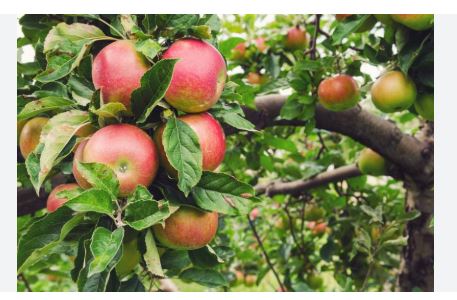
Honeycrisp apples are classified as Malus domestica, a species within the Rosaceae family, which includes other pome fruits like pears, cherries, and plums. The genus Malus encompasses all domesticated apple cultivars, and Honeycrisp is a modern variety developed through controlled cross-breeding. Introduced by the University of Minnesota, its parentage includes Honeygold (a Golden Delicious cross) and Macoun as confirmed by DNA testing, though earlier claims suggested Keepsake. This places it among mid-to-late-season dessert apples, bred for exceptional crispness and flavor rather than cider or cooking alone.
Honeycrisp apples were developed in 1960 at the University of Minnesota’s Horticultural Research Center in Excelsior, Minnesota, as part of a cold-hardy apple breeding program led by Dr. David Bedford and Jim Luby. The cross was made between Macoun (sweet, aromatic) and Honeygold (crisp, hardy), aiming for a fruit that could withstand harsh winters while offering superior taste. Initially discarded due to poor initial trials, a surviving tree was rediscovered in the 1980s, patented in 1991 (expired 2008), and released commercially in 1992. Named for its honeyed sweetness and crisp bite, it skyrocketed in popularity in the U.S. and Canada by the 2000s, becoming a supermarket star and a top seller in Minnesota and beyond.
Honeycrisp apples are medium to large, typically 7-9 cm in diameter (about 200-300 grams), with a round-to-slightly oblong shape. Their skin is thin, smooth, and mottled, featuring a yellow base with a red-to-pink blush covering 50-90% of the surface, speckled with prominent lenticels. The flesh is creamy yellow, coarse-textured, and explosively crisp due to large cells that burst when bitten, encasing a small core with tiny brown seeds. They ripen mid-to-late season (September-October) and store well for 6-10 months refrigerated, retaining texture. The taste is sweetly balanced with moderate tartness (13-15% Brix), offering a juicy, honey-like flavor with hints of pear and citrus, making it a standout for fresh eating.
Honeycrisp apple trees (Malus domestica ‘Honeycrisp’) thrive in USDA zones 3-8, excelling in colder temperate regions like Minnesota, Michigan, and Ontario, where they were bred for winter hardiness (down to -30°F/-34°C). They require 800-1000 chill hours (below 45°F/7°C) for dormancy and fruit set, performing best in zones 4-7 with cool springs and warm summers (70-85°F/21-29°C). Mid-season blooming (April-May, flower group 3) reduces frost risk, though zone 3 may need windbreaks. They demand full sun (6-8 hours daily) and well-drained, loamy soil (pH 6.0-7.0), adapting to varied elevations but preferring cooler summers to maintain crispness.
Culinary Applications of Honeycrisp Apples
- Fresh Eating: Their explosive crispness and sweet-tart flavor make them a top pick for raw snacking or slicing into lunchboxes.
- Salads: Chopped or thinly sliced, they add a juicy, crunchy bite to green or fruit salads, pairing well with walnuts or feta.
- Baking: Baked into pies, crisps, or muffins, their firm flesh softens slightly while retaining sweetness, enhanced by cinnamon or vanilla.
- Sauces: Cooked into applesauce, they offer a naturally sweet, textured base with a pear-like note, needing little added sugar.
- Cheese Pairing: Their balanced flavor complements sharp cheeses like cheddar or creamy ones like gorgonzola on cheese boards.
- Juicing: Pressed into juice or cider, they yield a sweet, refreshing drink with citrus undertones, ideal solo or blended.
- Grilling: Sliced and grilled, they caramelize lightly, adding a sweet contrast to savory dishes like pork or root vegetables.
Cultivation of Honeycrisp Apples
- Climate: Honeycrisp thrives in cold-temperate climates with chilly winters (800-1000 chill hours below 45°F/7°C) and moderate summers (70-85°F/21-29°C), avoiding excessive heat to maintain crispness.
- USDA Zones: Best suited to USDA zones 3-8, excelling in 4-7 where winters reach -30°F (-34°C) and springs are cool. Zone 3 may need extra frost protection during bloom.
- Soil: Requires well-drained, loamy soil with a pH of 6.0-7.0, rich in organic matter. It tolerates sandy soils but not clay or waterlogged conditions, which stress its shallow roots.
- Sunlight: Demands full sun (6-8 hours daily) for optimal fruit size, sweetness, and red blush. Partial shade reduces yield and crispness, a key trait.
- Planting: Propagated via grafting onto rootstocks like M26 (semi-dwarf) or Bud 9 (dwarf) for cold hardiness and earlier fruiting (2-4 years). Space trees 10-15 feet apart in rows 15-20 feet apart, planted in late winter or early spring.
- Watering: Needs consistent moisture—1-2 inches weekly—especially during bloom, fruit set, and summer growth (April-August). Drip irrigation prevents wet foliage; mature trees handle mild drought with deep watering.
- Support: Young trees require staking for 1-2 years against wind due to weak wood and shallow roots. Trellising or central leader training in orchards improves stability and fruit exposure.
- Pollination: Mid-season flowers (April-May, flower group 3) need cross-pollination with varieties like Gala, Fuji, or Pink Lady blooming concurrently. Bees are vital; place pollinators within 50-100 feet or use hives.
- Pests: Susceptible to codling moths, apple maggots, and spider mites. Use pheromone traps, kaolin clay, or spinosad sprays; netting deters birds, and ladybugs control aphids naturally.
- Diseases: Prone to fire blight, apple scab, and bitter pit (calcium deficiency). Prune for airflow, apply lime sulfur pre-bloom, and foliar calcium sprays post-bloom; rootstock choice aids resistance.
- Harvest: Fruits ripen mid-to-late season (September-October), picked when red blush covers 50-90% of yellow base and flesh is crisp (16-18 lbs pressure). Harvest in stages; yields 50-150 lbs per mature tree.
- Yield: Begins fruiting 2-4 years after planting, peaking at 5-10 years with 100-200 apples per tree under good care. Thin fruit (1-2 per cluster, 6-8 inches apart) in June to boost size and reduce biennial bearing; lifespan reaches 30-40 years.